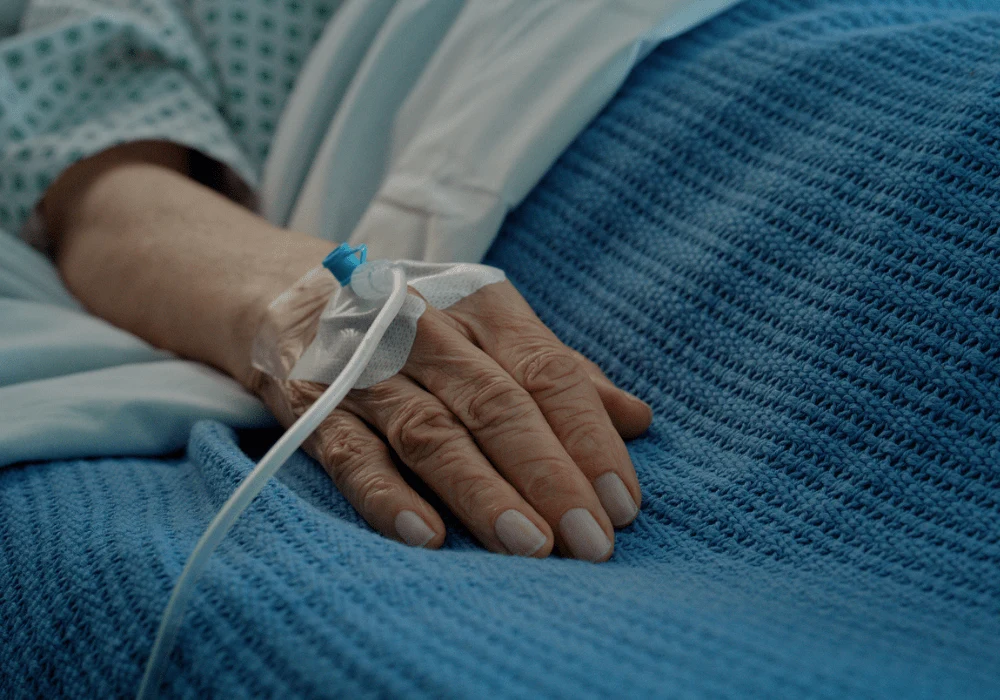Noninvasive ventilation (NIV) is increasingly used to assist spontaneous breathing in patients with acute hypoxaemic respiratory failure (AHRF) and can reduce the need for intubation, mortality, and ICU stay. However, if NIV fails, it can increase mortality if intubation is necessary, and high respiratory effort not controlled by NIV might cause additional lung injury.
An expert panel from the European Society of Intensive Care Medicine has indicated insufficient evidence to favour NIV over conventional oxygen therapy and suggests future research focus on how respiratory drive affects NIV success.
Challenges arise from measuring patient parameters and lung injury indices accurately in spontaneously breathing patients. While respiratory rate is easy to measure, tidal volume requires complex equipment, and assessing inspiratory effort and other lung injury indices is difficult without invasive procedures.
A potential solution is the use of digital twins—computational models based on individual patient data—that can estimate nonmeasurable parameters and simulate scenarios that are not possible in real life. This approach was demonstrated in a study of 30 AHRF patients, where changes in inspiratory effort within the first 2 hours of NIV predicted outcomes at 24 hours. However, the mechanistic link between inspiratory effort reduction and outcomes remains unclear due to limitations in measuring critical lung injury indices in the trial.
Using data from 30 moderate-to-severe AHRF patients who failed high-flow nasal cannula therapy and underwent NIV, digital twins were utilised to assess lung mechanics. This approach helped quantify the effects of external support and patient respiratory effort on lung injury indices and their influence on NIV success or failure.
In digital twins of patients undergoing NIV, those who succeeded showed notable improvements compared to those who failed. After 2 hours, patients who succeeded had a mean reduction in total lung stress of –10.9 cm H2O, mechanical power of –13.4 J/min, and total lung strain of 0.02. Conversely, patients who failed had much smaller reductions: –0.35 cm H2O in lung stress, –1.0 J/min in mechanical power, and 0.16 in lung strain.
Positive end-expiratory pressure (PEEP) from HFNC was similar to that set during NIV. Failed NIV patients had higher intrinsic PEEP (3.5 vs. 2.3 cm H2O), lower inspiratory pressure support (8.3 vs. 22.3 cm H2O), and slightly higher tidal volumes (10.9 vs. 9.4 mL/kg) compared to successful patients. Successful NIV increased respiratory system compliance by +25.0 mL/cm H2O, decreased inspiratory muscle pressure by –9.7 cm H2O, and reduced the patient's contribution to total driving pressure by 57.0%.
This study used digital twins of 30 AHRF patients who failed high-flow nasal cannula (HFNC) therapy and subsequently underwent NIV. Key findings include:
- NIV provided more respiratory support than HFNC, primarily through increased positive inspiratory pressure.
- Successful NIV resulted in alveolar recruitment, improved respiratory system compliance, and reduced respiratory effort due to the combined effects of positive inspiratory pressure and PEEP.
- Reductions in lung stress, strain, driving pressure, and mechanical power were largely due to decreased patient respiratory effort. Conversely, NIV failed in patients where low positive inspiratory pressure could not prevent patient self-inflicted lung injury (P-SILI) from excessive tidal volumes.
- The study found a correlation between changes in oesophageal pressure (ΔPes) and radiographic progression at 24 hours, suggesting P-SILI might contribute to lung damage. Digital twins highlighted the potential risks of P-SILI and the importance of continuous assessment of respiratory mechanics.
PEEP values from HFNC were similar to those during NIV but higher than previous studies with healthy volunteers. This could indicate that HFNC produces higher PEEP in AHRF patients compared to healthy individuals. NIV improved respiratory system compliance with minimal tidal recruitment, allowing patients to reduce respiratory effort, which led to significant drops in lung injury indices. Failed NIV patients had higher intrinsic PEEP and received lower positive inspiratory pressure, contributing to inadequate support and potentially leading to NIV failure.
Digital twins aligned with proposed risk thresholds for lung injury indices, with successful NIV reducing these indices to safer levels, while failure groups had higher indices above thresholds.
The study indicates that intrinsic PEEP might influence NIV success or failure. It emphasises the need for close monitoring of respiratory effort and mechanics in patients receiving noninvasive support.
Source: Critical Care Medicine
Image Credit: iStock






